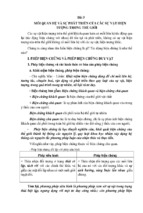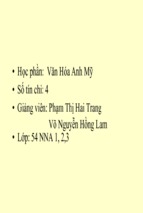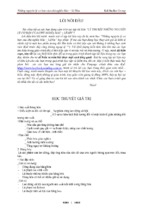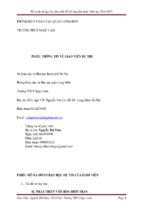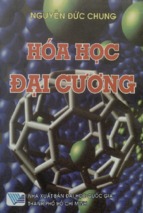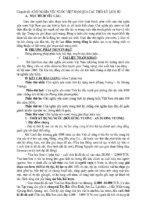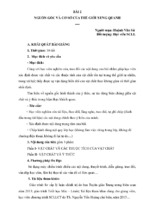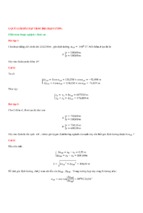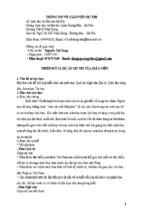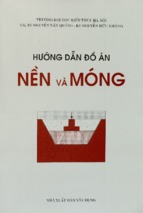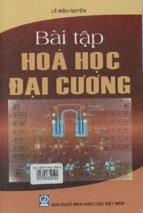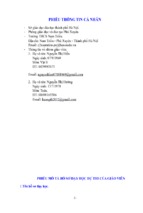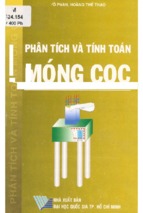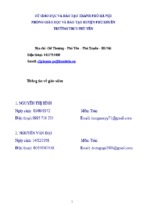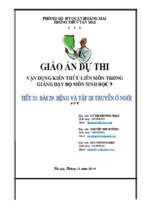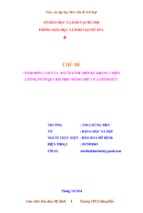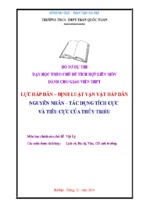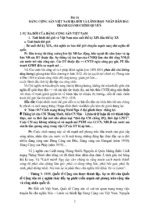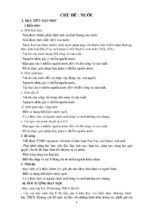Downloaded from ascelibrary.org by RMIT UNIVERSITY LIBRARY on 01/04/19. Copyright ASCE. For personal use only; all rights reserved.
Proceedings of the Transportation Research Congress 2016
Transportation
Research Congress
2016
Innovations in Transportation
Research Infrastructure
Beijing, China
June 6–8, 2016
EDITED BY
Linbing Wang, Ph.D.; Jianming Ling, Ph.D.;
Pan Liu, Ph.D.; Hehua Zhu;
Hongren Gong; and Baoshan Huang, Ph.D., P.E.
Downloaded from ascelibrary.org by RMIT UNIVERSITY LIBRARY on 01/04/19. Copyright ASCE. For personal use only; all rights reserved.
TRANSPORTATION RESEARCH
CONGRESS 2016
INNOVATIONS IN TRANSPORTATION RESEARCH
INFRASTRUCTURE
PROCEEDINGS OF THE TRANSPORTATION
RESEARCH CONGRESS 2016
June 6–8, 2016
Beijing, China
SPONSORED BY
China Research Institute of Highway
Tongji University
Southeast University
Harbin Institute of Technology
Chang’An University
University of Science and Technology Beijing
Construction Institute of the American Society of Civil Engineers
EDITED BY
Linbing Wang, Ph.D.
Jianming Ling, Ph.D.
Pan Liu, Ph.D.
Hehua Zhu
Hongren Gong
Baoshan Huang, Ph.D., P.E.
Published by the American Society of Civil Engineers
Downloaded from ascelibrary.org by RMIT UNIVERSITY LIBRARY on 01/04/19. Copyright ASCE. For personal use only; all rights reserved.
Published by American Society of Civil Engineers
1801 Alexander Bell Drive
Reston, Virginia, 20191-4382
www.asce.org/publications | ascelibrary.org
Any statements expressed in these materials are those of the individual authors and do not
necessarily represent the views of ASCE, which takes no responsibility for any statement
made herein. No reference made in this publication to any specific method, product, process,
or service constitutes or implies an endorsement, recommendation, or warranty thereof by
ASCE. The materials are for general information only and do not represent a standard of
ASCE, nor are they intended as a reference in purchase specifications, contracts, regulations,
statutes, or any other legal document. ASCE makes no representation or warranty of any
kind, whether express or implied, concerning the accuracy, completeness, suitability, or
utility of any information, apparatus, product, or process discussed in this publication, and
assumes no liability therefor. The information contained in these materials should not be used
without first securing competent advice with respect to its suitability for any general or
specific application. Anyone utilizing such information assumes all liability arising from such
use, including but not limited to infringement of any patent or patents.
ASCE and American Society of Civil Engineers—Registered in U.S. Patent and Trademark
Office.
Photocopies and permissions. Permission to photocopy or reproduce material from ASCE
publications can be requested by sending an e-mail to
[email protected] or by locating a
title in ASCE's Civil Engineering Database (http://cedb.asce.org) or ASCE Library
(http://ascelibrary.org) and using the “Permissions” link.
Errata: Errata, if any, can be found at https://doi.org/10.1061/9780784481240
Copyright © 2018 by the American Society of Civil Engineers.
All Rights Reserved.
ISBN 978-0-7844-8124-0 (PDF)
Manufactured in the United States of America.
Transportation Research Congress 2016
iii
Preface
Downloaded from ascelibrary.org by RMIT UNIVERSITY LIBRARY on 01/04/19. Copyright ASCE. For personal use only; all rights reserved.
Transportation infrastructure plays a critical role in the economic development of a
country and the daily life of everybody. Transportation researchers and engineers have
always been making efforts towards the ambition of sustainable, smart and resilient
transportation. The recent years have seen numerous innovations in transportation
materials, design, testing and characterization, construction, operation, maintenance
and rehabilitation.
This ASCE Special Technical Publication contains sixty-eight fully-reviewed papers,
covering the topics of pavement materials, pavement structures, geotechnical
engineering, and bridge engineering. These papers were presented at the inaugural
meeting of the Transportation Research Congress (TRC) held at the National
Convention Center, Beijing, China, June 6-8, 2016.
The TRC is jointly organized by universities, research institutes, industries, and China
Highway and Transportation Society. TRC is intended to serve as an international
platform for researchers, educators, practicing engineers, investors, entrepreneurs, and
government officials in transportation infrastructure from all over the world. At TRC,
experts will present the latest research findings, exchange research ideas, share
experiences and lessons learned, showcase successful innovations and practice,
identify research and educational needs and provide consultations to transportation
community on a regular basis.
Section 1 Materials
Twenty-seven papers are included in this section, covering mix design, testing,
characterization and modeling of asphalt, cementitious, and base pavement materials.
Various sustainable materials, novel testing and modeling methods, and different
material properties and performance characteristics are involved.
Section 2 Pavement Structure
Seventeen papers cover the response and long-term performance of asphalt and
concrete pavements under traffic and different climatic conditions. Different preventive
maintenance and rehabilitation strategies are also provided.
Section 3 Geotechnical Engineering
Twenty-three papers offer the latest research on the construction and behavior of
tunnels, deep foundations, deep excavations, special foundations and geologies.
Section 4 Bridge Engineering
Two papers provides the advances in the technologies of energy harvest from bridges
and health monitoring system of bridges.
© ASCE
Transportation Research Congress 2016
iv
Downloaded from ascelibrary.org by RMIT UNIVERSITY LIBRARY on 01/04/19. Copyright ASCE. For personal use only; all rights reserved.
All papers published in this ASCE Special Technical Publication were evaluated by at
least two reviewers as well as the editors. All comments were adequately addressed by
the authors of these accepted papers. In addition, all published papers are eligible for
discussion in the Journal of Materials in Civil Engineering or Journal of Transportation
Engineering and can also be considered and recommended for ASCE paper awards.
The editors would like to thank all the authors who have submitted their papers to the
inaugural meeting of TRC. Thanks also go to many reviewers for their time and efforts.
The editors are appreciative to Laura Ciampa and Katerina Lachinova from the ASCE
Construction Institute (CI), and Donna Dickert from the ASCE Publications for their
great support in approving and scheduling the publication of this proceeding.
Editors
Linbing Wang, Virginia Polytechnic University
Jianming Ling, Tongji University
Pan Liu, Southeast University
Hehua Zhu, Tongji University
Hongren Gong, University of Tennessee
Baoshan Huang, University of Tennessee
© ASCE
Transportation Research Congress 2016
v
Contents
Downloaded from ascelibrary.org by RMIT UNIVERSITY LIBRARY on 01/04/19. Copyright ASCE. For personal use only; all rights reserved.
Materials
Research on Moisture Susceptibility of Asphalt Mixture Based on Surface
Energy Theory ................................................................................................................................1
Yu Sun and Lihan Li
Analysis on Moisture Susceptibility of Warm Mix Asphalt Affected by Moist
Aggregate and Multiple Freeze-Thaw Cycles ...........................................................................12
Jie Ji, Peng Zhai, Zhi Suo, Ying Xu, and Shi-Fa Xu
Properties and Performance Evaluation Index of Lateritic Gravel from Mali
in West Africa...............................................................................................................................22
Gengzhan Ji, Jinsong Qian, and Guoxi Liang
The Effect of Material Composition on Abrasive Resistance of Pavement
Concrete ........................................................................................................................................31
Ping Li, Ying Li, Lingyi Kong, Feili Pan, and Qiumin Wang
Investigation on Inherent Anisotropy of Asphalt Concrete Due to Internal
Aggregate Particles ......................................................................................................................39
J. Chen, Y. Kong, H. Wang, Y. Chen, and J. Liu
Evaluation of Rejuvenator on Softening, Toughness, and Diffusion Ability
for Lab-Aged SBS Modified Asphalt .........................................................................................49
Zhen Wang, Zhen Li, Gen Li, Hao Liu, and Liying Yang
Research of Marshall Test Evaluation Method Based on Anti-Cracking
Material .........................................................................................................................................61
Li Liu, Zhaohui Liu, Sheng Li, and Yu Xiang
Preliminary Study of Using Spent Fluid Catalytic Cracking (FCC) Catalyst
in Asphalt ......................................................................................................................................69
Jianming Wei, Yanan Li, Meng Xu, Xingong Zhang, and Yuzhen Zhang
Law and Corresponding Relationship between TFOT and PAV of Asphalt .........................82
Guizhao Li, Yelong Feng, Yuzhen Zhang, Cheng Liu, Fuqiang Dong,
and Yuchao Lv
Nanomaterials in Civil Engineering: A State-of-the-Art Review ............................................88
Lei Gao, Ren Zhen, Xiangjuan Yu, and Keyi Ren
The Influence of Foaming Water Content on the Aging Characteristic of
Foamed Warm-Mix Asphalt .......................................................................................................98
Fuqiang Dong, Xin Yu, Xingmin Liang, Shengjie Liu, Gongying Ding, and Bo Xu
© ASCE
Transportation Research Congress 2016
Downloaded from ascelibrary.org by RMIT UNIVERSITY LIBRARY on 01/04/19. Copyright ASCE. For personal use only; all rights reserved.
Cement Asphalt Mastic Dynamic Mechanical Properties and Microstructure
Research ......................................................................................................................................106
Yunliang Li, Menglong He, Jiuye Zhao, Shanshan Wang, Lun Ji, Ouyang Jian,
and Yiqiu Tan
Laboratory Test of Expansive Soil Improved by Lime–Basalt Fiber
Reinforcement ............................................................................................................................120
Yuehua Wang, Shu Sun, Wei Ye, Fulin Li, and Hanfei Ding
Laboratory Research on Fatty Acid Based Biobinder as an Addition for
Crumb Rubber Modified Asphalt ............................................................................................127
Jiayun Zhang, Gang Xu, Minghui Gong, and Jun Yang
Dynamic Shear Modulus Prediction of Asphalt Mastic Based on
Micromechanics .........................................................................................................................141
Naisheng Guo, Zhichen Wang, Zhanping You, and Yinghua Zhao
Creep Instability Rules of Asphalt Mixture Based on Compression-Shear
Fatigue Test ................................................................................................................................156
Junxiu Lv, Xingyu Gu, Xiaoyuan Zhang, and Yiqing Dai
Concrete Strength Monitoring Based on Piezoelectric Smart Aggregates ...........................165
S. Yan, J. Chen, and W. Sun
The Influence of Mixing Temperature on the Performance of Hot In-Plant
Recycled Asphalt Mixture .........................................................................................................173
Xuchang Ying and Songlin Ma
Asphalt-Aggregate Interface Failure Mechanism and Its Characterization
Methods .......................................................................................................................................182
Xin Qiu, Shanglin Xiao, Qing Yang, and Xiaohua Luo
Experimental Study on the Effect of Steel Slag Powder and Fine Steel Slag
on the Performance of Asphalt Mixture ..................................................................................195
Bangwei Wu, Liping Liu, Guowei Liu, and Yanjin Feng
Study on the Properties of Waterborne Polyurethane Modified Emulsified
Asphalt ........................................................................................................................................207
Dongwei Cao, Yanjun Zhang, Lei Xia, Yingfu Li, and Haiyan Zhang
Influence of CWCPM on the Mechanical Property of Cement Stabilized
Aggregate ....................................................................................................................................216
Cuizhen Xue, Aiqin Shen, Tianqin He, and Zhenghua Lv
Application of 3D Fractal Dimension in Describing Surface Morphology
of Aggregates ..............................................................................................................................225
Lingjian Meng, Yue Hou, Zhenyu Qian, Linbing Wang, and Meng Guo
© ASCE
vi
Transportation Research Congress 2016
vii
Experimental Research on Mix Design and Pavement Performance for
Special Basalt Fiber Reinforced OGFC Asphalt Mixture......................................................233
Xudong Zha, Jieyuan Deng, and Chengjian Zhang
Downloaded from ascelibrary.org by RMIT UNIVERSITY LIBRARY on 01/04/19. Copyright ASCE. For personal use only; all rights reserved.
Design and Text Method of Indoor Noise for Micro-Surfacing Mixture .............................242
Zhen Li, Hao Liu, Yuming Dong, and Zhen Wang
The State-of-the-Art of Multiscale Mechanical Modeling Methods for
Hydrated Cement Concrete ......................................................................................................251
Wenjuan Sun, Yue Hou, and Linbing Wang
Effect of Aggregate Mineral Composition on Polish Resistance Performance ....................263
Zhenyu Qian, Jiangfeng Wu, Fengyan Sun, and Linbing Wang
Pavement Structure
Preventive Maintenance Decision Making of Asphalt Pavement Based on
Fuzzy Comprehensive Evaluation Method ..............................................................................272
Xiaoshan Liu, Haichen Yu, and Haiyao Miao
Public Transport Choice Behavior Model of Short Trip under the
Subtropical Climate ...................................................................................................................280
Jianmin Xu, Xiaoran Qin, and Yingying Ma
The Long Term Service Performance of Non-Slip and Noise Reduction
Asphalt Pavement Followed Up and Observed in the Southern Climates ...........................291
Xian-Ping Tang, Wen Yi, Xian-Feng He, and Bo Yao
Research on Pavement Materials and Innovations in Intelligent
Transportation Systems.............................................................................................................299
Shanglin Song, Linbing Wang, Meng Guo, Yue Hou, Zhoujing Ye,
and Qian Zhao
A Brief Review for SMA Pavements in China ........................................................................305
Meng Guo, Yiqiu Tan, Xuesong Du, Rui Wen, and Ming Zhang
Environmental Impacts of Different Maintenance and Rehabilitation
Strategies for Asphalt Pavement ..............................................................................................312
Bingye Han, Jianming Ling, and Hongduo Zhao
Numeric Analysis of Basalt Fiber Reinforced Concrete Pavement.......................................323
Yiqing Dai, Zhenyi Wang, Junxiu Lv, and Xingyu Gu
Mechanical Response Analysis of Asphalt Concrete Overlay Placed on
Asphalt Pavement Considering Cross-Anisotropic Pavement Materials .............................333
Yingbin Hu, Kezhen Yan, and Lingyun You
© ASCE
Transportation Research Congress 2016
viii
Downloaded from ascelibrary.org by RMIT UNIVERSITY LIBRARY on 01/04/19. Copyright ASCE. For personal use only; all rights reserved.
Incorporating Life Cycle Science into Asphalt Pavement Maintenance
Decision Making .........................................................................................................................341
Haoran Zhu, Haiquan Cai, Jinhai Yan, Hao Li, and Hui Li
Long-Term Performance Study of Long Life Pavement Pilot Section
in Jiangsu, China........................................................................................................................353
Aihua Liu, Hao Li, and Peng Zhang
Research on Influencing Factors for Permanent Deformation of Soil
Base of Low Embankment Highway ........................................................................................364
Wei-Zhi Dong and Fu Zhu
Prototype Modeling of Pile-Type Piezoelectric Transducer for Harvesting
Energy from Vehicle Load ........................................................................................................374
Yanliang Niu, Hongduo Zhao, Xueqian Fang, and Yujie Tao
Real-Time Monitoring System and Evaluation Method of Asphalt
Pavement Paving Temperature Segregation ...........................................................................383
Lili Zhang, Yan Shi, Zhiqiang Zhao, and Peng Zhang
Study on the Long-Term Performance of Subgrade Structure Considering
Environmental and Climatic Factors .......................................................................................396
Yanbin Ruan, Bin He, and Wanping Wu
Research on RLWT and APA Rutting Loading Mode Based on Digital
Image Technology ......................................................................................................................400
Cheng Wan, Qiang Yi, Bin Yang, Ke Xu, Yongjun Meng, and Hongliu Rong
Self-Powered Intelligent Monitoring System for Transportation Infrastructures ..............409
Linbing Wang, Zhoujing Ye, Yue Hou, Hailu Yang, and Xinlong Tong
Highway Geometric Design for Mountainous Regions Considering the
Vehicle-Road Coupling Factors ................................................................................................420
Lei Yue, Yuchuan Du, and Hongyun Yao
Geotechnical
Experiment Study on Tunnel Crown Collapse and the Bolt Anchoring
Effect in Weak and Broken Rock Mass ...................................................................................430
Q. W. Xu, W. T. Wang, P. P. Cheng, H. H. Zhu, and W. Q. Ding
Study on the Optimization of Underground Continuous Wall Embedded
Depth of the Super Large Pit ....................................................................................................438
Jiabing Yao, Jiangshan Fu, Xin Xu, and Shimin Wang
Studies of the Effect of Seasonal Temperature Change on a Circle Beam
Supporting Excavation ..............................................................................................................446
Chang Liu, Yan-Po Liu, Gang Zheng, and Ya-Long Zhang
© ASCE
Transportation Research Congress 2016
Downloaded from ascelibrary.org by RMIT UNIVERSITY LIBRARY on 01/04/19. Copyright ASCE. For personal use only; all rights reserved.
Finite Element Analysis on the Influence of Unloading Effect and Rebound
Effect on Load and Settlement of Single Pile ..........................................................................463
Chang Liu and Deqiang Guo
Research of Prediction Method on Geology Faults of Karst Area in Southwest
of Guangxi Province ..................................................................................................................472
Haibo Yao, Weidong Lv, Yansheng Geng, and Fan Wang
Centrifuge Modeling of Geosynthetic-Encased Stone Columns in Soft Clay
under Embankment ...................................................................................................................486
Liangyong Li, Jianfeng Chen, Cao Xu, and Shouzhong Feng
The Preparation and Properties of New Subgrade Replacement Material
in Discontinuous Permafrost Zone ...........................................................................................496
Dongfeng Chen, Chunyu Zheng, Jinsong Qian, and Dongxue Li
Influence on High-Speed Railway Bridge Caused by Shield Tunneling in
Sandy Pebble Stratum and Its Controlling Technologies ......................................................507
Panpan Cheng, Qianwei Xu, Guyang Li, and Xiaoliang Li
Effect of Subway Tunnel Excavation by Drill-Blasting Method on Pipeline .......................521
Yongyan Yu, Yongtao Gao, and Zijian Du
Experimental Study on Dynamic Characteristics and Associated
Influencing Factors of Saturated Sand ....................................................................................530
Xiangjuan Yu, Zhen Ren, and Lei Gao
Research on Mechanical Properties of Existing Station Structure While
Diaphragm Wall Is Demolished during Construction ............................................................537
Xingzhu Shen, Qiang Qi, Quanxia Yang, and Shimin Wang
Research about Effect of Defects of Filled Layer in Inverted Arch on the
Deep-Buried and Heavy-Haul Railway Tunnel Structures and Its
Reinforcement Measures ...........................................................................................................545
Shimin Wang, Qingyang Yu, Xingzhu Shen, Xiangfan He, and Jiabing Yao
Three-Dimensional Calculation on Vertical Soil Displacement of Shield
Tunnel Induced by Ground Loss Considering Consolidation ...............................................553
Wenjun Zhang, Mingming Jin, Huayang Lei, Heng Kong, and Caixia Guo
Research on Optimization of the Stratum Reinforcement Scheme When
Shield Tunnel Crossing the Fault Fracture Zone ...................................................................569
Xiangfan He, Hongzhao Feng, Feng Gao, and Shimin Wang
Stratigraphic Classification Based on the Evaluated Difficulty of the
Construction by Using Shield Tunneling Machine .................................................................577
Mengbo Liu, Shaoming Liao, Longge Xiao, and Chihao Cheng
© ASCE
ix
Transportation Research Congress 2016
x
Downloaded from ascelibrary.org by RMIT UNIVERSITY LIBRARY on 01/04/19. Copyright ASCE. For personal use only; all rights reserved.
Comparative Study on Suitability of EPB Machine in Typical Sandy Cobble
Ground in China ........................................................................................................................590
Chihao Cheng, Shaoming Liao, Lisheng Chen, and Zhe Zhou
Numerical Analysis of Highway Tunnel Fire under Semi-Transverse and
Transverse Ventilation Systems................................................................................................604
Bin Xue, Jianzhong Pei, Jiupeng Zhang, Yanwei Li, Rui Li, and Linghao Zhou
Mechanical Behavior of SSPC Segment Used in Launching and Arrival of
Shield Machine in Soft Ground ................................................................................................614
Wenjun Zhang, Gaole Zhang, Huayang Lei, Mingming Jin,
and Atsushi Koizumi
Research on Settlement in Full-Face Excavation Model Test of Shallow
Buried Tunnel Based on ADECO-RS ......................................................................................627
Shi Tan, Wenqi Ding, Cheng Liu, and Chao Duan
Brief Introduction of Synchronous Grouting Model Test Based on
Quasi-Rectangular Shield Tunnel ............................................................................................640
Chao Duan, Wenqi Ding, Tianchi Zhao, Tao Tang, and Peinan Li
Study of the Formation and Supporting Principle of Filter Cake in Slurry
Shield Tunneling by Particle Flow Code .................................................................................648
R. Jia, F. L. Min, W. Zhu, and W. J. Zhang
Chamber Pressure Optimization for Shield Tunneling .........................................................662
Zhouxiang Ding, Peng Wang, and Siyuan Wang
Bridge Engineering
Theoretical Modeling on Piezoelectric Energy Harvesting from Bridges
Considering Roadway Surface Irregularities ..........................................................................673
Z. W. Zhang, H. J. Xiang, and Z. F. Shi
The Health Monitoring System Design for Bridge Based on Internet
of Things .....................................................................................................................................685
Xinlong Tong, Zhoujing Ye, Yinan Liu, Hailu Yang, Yue Hou,
and Linbing Wang
© ASCE
Transportation Research Congress 2016
1
Research on Moisture Susceptibility of Asphalt Mixture Based on Surface Energy Theory
Yu Sun1 and Lihan Li2
Downloaded from ascelibrary.org by RMIT UNIVERSITY LIBRARY on 01/04/19. Copyright ASCE. For personal use only; all rights reserved.
1
Key Laboratory of Road and Traffic Engineering of Ministry of Education, School of
Transportation Engineering, Tongji Univ., Shanghai, China, P.O. Box 201804 (corresponding
author). E-mail:
[email protected]
2
Key Laboratory of Road and Traffic Engineering of Ministry of Education, School of
Transportation Engineering, Tongji Univ., Shanghai, China, P.O. Box 201804. E-mail:
[email protected]
ABSTRACT
According to surface energy theory and adhesion-peeling model, Wilhelmy plate method and
sessile drop method are respectively used to test the surface free energy parameters of asphalt
and aggregates so that adhesion work and peeling work can be calculated. ER is an evaluation
product based on adhesion work and peeling work, which can reflect the moisture susceptibility
of asphalt mixture because of its good correlation with macroscopic index. The higher ER is, the
better the mixture performs. Results show that short-term aging, contrary to long-term aging,
improves the moisture susceptibility of asphalt mixture; soaking will decrease the anti-stripping
ability; freezing has no effect on moisture susceptibility, but additional high temperature thawing
process will reduce the resistance to water damage. Anti-stripping ability of asphalt mixture is
improved with the increasing of surface roughness; an increase in surface water and clay content
is detrimental to moisture susceptibility.
1. INTRODUCTION
Because of its short construction period, improved driving comfort and safety, asphalt
pavement has become more and more popular. However, moisture induced damage (Huang,
2006; Wang, 2010) of asphalt pavement can seriously lower its service performance. Water
comes into the interface of asphalt and aggregates, which makes asphalt fall off from aggregates,
and then asphalt mixture becomes loose, resulting in pit and groove under the traffic loads.
Besides the external factors including load and water, moisture induced damage also depends on
the moisture susceptibility of asphalt mixture.
At present, many methods and indexes (Hansen, 1991; Brown, et al. 1972; Lynn, et al. 1993;
Ronald, et al. 1994; James, 1991) have been put forward, such as water-boiling method, soaking
method, and freeze thaw split test. However, these methods and indexes all evaluate the
performance from the macroscopic aspect, ignoring the process and mechanism of moisture
damage. Some researchers found that surface energy theory (Cheng, 2002) and its test methods
can well explain the moisture susceptibility of asphalt mixture. According to the surface energy
theory, the adhesion between asphalt and aggregates mainly depends on their wetting function.
When the asphalt diffuses and wets the surface of aggregates, some energy will be released,
which depends on the intimate contact and mutual attraction of asphalt and aggregates. It is
easier for water to intrude into the asphalt-aggregate interface because the adhesion between
water and aggregates is lager, which will lead to the water damage of asphalt pavement.
Therefore, surface energy theory and its test methods are used in this paper to evaluate the
adhesion and peeling characteristics of asphalt mixture. Furthermore, moisture susceptibility and
its influence factors can be explored according to the parameters of surface energy.
© ASCE
Transportation Research Congress 2016
2
2. METHODOLOGY
2.1 Theory of adhesion between asphalt and aggregates
Downloaded from ascelibrary.org by RMIT UNIVERSITY LIBRARY on 01/04/19. Copyright ASCE. For personal use only; all rights reserved.
2.1.1 Cohesiveness of asphalt
Cohesiveness of asphalt is the ability of creating relative displacement to resist the
deformation under the external force, which is produced by both asphalt and aggregates.
Although the cohesiveness is not as large as the interlocking and the adhesion, it still plays an
important role in the moisture susceptibility. Research shows that the larger the viscosity is, the
higher the cohesiveness is, accompanied with improved moisture susceptibility (Lai, 2004; Yan,
1997).
According to surface physical chemistry (Zhu, 1996), homogeneous asphalt can be divided
into two new surfaces, and the work done by external force is defined as cohesiveness work,
which is denoted by G .
G 2
(1)
2
2
Where G is cohesiveness work, mJ/m ; is surface energy of asphalt, mJ/m .
2.1.2 Adhesion between asphalt and aggregates
According to surface energy theory, adhesion between asphalt and aggregates mainly comes
from energy interaction, which is formed by asphalt wetting aggregates. When the asphalt
diffuses and wets the surface of aggregates, some energy will be released, which depends on the
intimate contact and mutual attraction of asphalt and aggregates. According to thermodynamics,
the energy can indicate the stability of the whole system. The more energy is released, the stabler
the system is, which means the adhesion and thus the water stabilty are better. When asphalt
mixture is immersed into water, it is easier for water to intrude into the asphalt-aggregate
interface because the adhesion between water and aggregates is lager, forming asphalt-water
interface and water-aggregate interface, which results in the peeling of asphalt.
Dr. Lytton et al. from Texas A&M University show that surface energy can characterize the
adhesion of asphalt mixture, and it is also feasible to predict the anti-stripping ability of asphalt
(Lytton, 2002).
2.2 Parameters of surface energy
According to surface physical chemistry (Teng, 2009), the surface energy of liquid or solid
can be calculated with Van der Waals parameter LW and acid-base interaction parameter AB ,
while AB consists of acid parameter and base parameter , and their relationship is shown
in Eq. (2).
LW AB ; AB 2
Where LW is Van der Waals Force between molecules (including orientation force,
induction force and dispersion force); AB is Lewis acid-base force (including ionic bond and
covalent bond); and are electron acceptor and electron donor, respectively.
© ASCE
(2)
Transportation Research Congress 2016
3
2.3 Adhesion and peeling model
Downloaded from ascelibrary.org by RMIT UNIVERSITY LIBRARY on 01/04/19. Copyright ASCE. For personal use only; all rights reserved.
2.3.1 Adhesion model of asphalt and aggregates
Adhesion work refers to the decrease of interfacial free energy caused by adhesion of asphalt
to aggregates. Fowkes thinks that the adhesion work of an interface is the sum of all adhesion
work cause by interaction among molecules. Combined with Van der Waals theory and Lewis
acid-base theory mentioned in surface physical chemistry, adhesion work can be expressed by
Eq. (3) when minor force is ignored (Xiao, 2007).
(3)
Was WasLW WasAB
Where Was is adhesion work; a means asphalt; s means stone; as means the interface of
asphalt and aggregates; WasLW is the adhesion work caused by Van der Waals force; WasAB is the
adhesion work caused by Lewis acid-base force.
By substituting the surface energy parameters into Eq. (3) combining with the adhesion
process, the adhesion work can be calculated by Eq. (4). The larger it is, the better adhesion
performance is.
Was 2 aLW sLW 2 a s 2 s a
(4)
2.3.2 Peeling model of asphalt and aggregates
Water intrudes into the interface of asphalt and aggregates instead of asphalt film with the
repeated action of wheel load. Peeling means that asphalt is separated from aggregates and two
new interfaces are formed, that is asphalt-water and water-aggregate. The energy released in this
process is defined as peeling work. It includes the part of Van der Waals force and the part of
Lewis acid-base force, which can be expressed by Eq. (5).
LW
AB
(5)
Wasw Wasw
Wasw
Where Wasw is peeling work; asw means the process of peeling.
By substituting the surface energy parameters into Eq. (5) combining with the peeling
process, the peeling work can be calculated by Eq. (6). The larger it is, the worse ability of antistripping is
Wasw 2 aLW sLW 2 aLW wLW 2 sLW wLW 2 a s
(6)
2 s a 2 a w 2 w a 2 s w 2 w s
Index of moisture susceptibility based on adhesion-peeling model
According to adhesion-peeling model, adhesion work and peeling work will both increase
with the increasing of surface energy parameters and the moisture susceptibility depends on both
of them. Bhasin (Bhasin, 2006) from Texas A&M University has put forward the indexes to
evaluate the moisture susceptibility of asphalt mixture based on adhesion and peeling work
through comprehensive experiments, which are shown in Eq. (7)~(8).
(7)
ER1 Was / Wasw
ER2 Was G / Wasw
(8)
Where Was is adhesion work; Wasw is peeling work; G is cohesiveness work.
ER2 (ER for short) is used in this paper because of its consideration for cohesiveness work.
© ASCE
Transportation Research Congress 2016
4
3. TEST MATERIALS AND SCHEME
Downloaded from ascelibrary.org by RMIT UNIVERSITY LIBRARY on 01/04/19. Copyright ASCE. For personal use only; all rights reserved.
3.1 Test materials
Asphalt used in the tests includes A-70#, SBS, high viscosity asphalt, 15/25#, A-70# adding
12% PR.S, 12% rock asphalt and 12% Baoli. Aggregates used in the tests include basalt, diabase,
limestone, sandstone, and granite. The indexes of basic performance are shown in Table 1 and
Table 2.
Asphalt
A-70#
Table 1. Properties of Asphalt
25°C Penetration Softening point 15°C Ductility 135°C Viscosity
(0.1mm)
(°)
(cm)
(Pa.s)
64.3
48.2
>100
0.754
SBS
47
61.6
49.5(5°C)
2.014
70#+rock asphalt
19.5
64
7.2
2.091
High viscosity
25.6
84.8
80.9
3.218
70#+PR.S
16
70.3
4.4
3.095
15/25#
21
62
0.4
2.787
70#+Baoli
19.2
90.3
14.4
3.302
Aggregates
Table 2. Properties of Aggregates
Apparent density (g/cm3)
Water absorption (%)
Basalt
2.916
2.3
Diabase
2.789
1.8
Limestone
2.717
1.4
Sandstone
2.651
4.1
Granite
3.027
0.9
3.2 Test scheme
Wilhelmy plate method (Little, et al. 2006) and sessile drop method (Ardebrant, et al. 1991)
are respectively used to test the surface energy parameters of asphalt and aggregate. By
substitution of the parameters into Eq.(4) and Eq.(6), the adhesion and peeling work can be
calculated, and then ER can be obtained to evaluate the moisture susceptibility of asphalt
mixture. The influence factors are also analyzed and the simulation conditions are explained as
follows.
Thermal aging: 163°C TFOT is used to simulate short-term and long-term aging, and the
duration is 5h and 29h (5h+24h), respectively.
Soaking: the asphalt samples are soaked in water for 1d, 3d, 5d, 7d, 14d, 28d, and then dried
before test.
Freezing: the asphalt samples are frozen for 16h at -18°C, and soaked in the water at 25°C,
and then dried.
© ASCE
Downloaded from ascelibrary.org by RMIT UNIVERSITY LIBRARY on 01/04/19. Copyright ASCE. For personal use only; all rights reserved.
Transportation Research Congress 2016
Thawing: the frozen samples are soaked in the water for 0.5h at 60°C, and soaked in the
water at 25°C, and then dried.
Surface roughness: the basalt is polished with waterproof abrasive papers of 180#, 240#,
320#, and then cleaned and dried.
Surface clay content: the aggregate is buried for some days in the dust particles whose
diameter is less than 0.075mm, and then brushed until its clay content meets the requirement.
Surface water content: the clean aggregate is soaked in the distilled water for 1d, dried at
25°C, weighed every minute, and tested immediately after its water content meets the
requirement.
4. RESULTS AND DISCUSSION
4.1 Relationship of ER and TSR
To explore the relationship between macroscopic index and ER based on surface energy
theory, freeze thaw split tests of 70# and SBS asphalt mixture are undertaken. The type of the
mixture is AC-13 and the results are shown in Figure 1.
Figure 1. Relationship of ER and TSR.
There is good correlation between ER and macroscopic index (Figure 1). ER is incrased with
higher TSR. Thus it is feasible to use ER to evaluate the moisture susceptibility of asphalt
mixture.
4.2 Influence factors based on surface energy of asphalt
4.2.1 Types of asphalt
The surface energy of different asphalts and the parameters of basalt mixture are shown in
Table 3.
The moisture susceptibility of 70#+Baoli is better than that of high viscosity and 70#+PR.S,
and the performance of 70# is the worst. The trend of ER is the same as the surface energy of
asphalt. When the aggregate is determined, the larger is, the better moisture susceptibility is.
© ASCE
5
Transportation Research Congress 2016
6
Downloaded from ascelibrary.org by RMIT UNIVERSITY LIBRARY on 01/04/19. Copyright ASCE. For personal use only; all rights reserved.
Table 3. Parameters of Different Asphalt and Basalt Mixture
γ
Adhesion work Peeling work Cohesiveness work
Types of asphalt
(mJ/m2)
(mJ/m2)
(mJ/m2)
(mJ/m2)
70#
14.73
-44.83
-129.12
29.46
ER
0.575
SBS
15.67
-46.67
-128.95
31.34
0.605
70#+Rock asphalt
15.66
-46.58
-128.28
31.32
0.607
High viscosity
16.74
-48.44
-128.70
33.48
0.637
70#+PR.S
16.44
-48.58
-128.46
32.88
0.634
15/25
16.03
-47.12
-128.90
32.06
0.614
70#+Baoli
16.81
-50.33
-125.91
33.62
0.667
4.2.2 Thermal aging
Parameters of different asphalts and basalt after short-term aging and long-term aging are
shown in Table 4 and Table 5.
Types of asphalt
70#
SBS
-48.07
-128.84
34.14
0.638
70#+Rock asphalt
-48.88
-123.60
33.90
0.670
High viscosity
-49.51
-124.63
36.28
0.688
70#+PR.S
-50.67
-127.10
38.60
0.702
15/25
-48.33
-127.10
34.50
0.652
70#+Baoli
-50.33
-128.43
36.66
0.677
Types of asphalt
70#
© ASCE
Table 4. Parameters after Short-term Aging
Adhesion work Peeling work Cohesiveness work
ER after
2
2
2
(mJ/m )
(mJ/m )
(mJ/m )
short-term aging
-46.04
-128.03
30.32
0.596
Table 5. Parameters after Long-term Aging
Adhesion work Peeling work
Cohesiveness work
(mJ/m2)
(mJ/m2)
(mJ/m2)
-47.70
-116.11
28.48
ER after
long-term aging
0.656
SBS
-47.60
-128.67
33.00
0.626
70#+Rock asphalt
-45.37
-126.36
29.30
0.591
High viscosity
-46.87
-128.65
31.78
0.611
70#+PR.S
-54.05
-126.92
37.50
0.721
15/25
-47.19
-124.79
31.02
0.627
70#+Baoli
-47.90
-127.10
32.76
0.635
Transportation Research Congress 2016
7
Downloaded from ascelibrary.org by RMIT UNIVERSITY LIBRARY on 01/04/19. Copyright ASCE. For personal use only; all rights reserved.
ER after short-term aging is generally larger than that of the original samples, which means
the moisture susceptibility after short-term aging is better. However, the changing trend of ER
after long-term aging is not the same. The moisture susceptibility of 70#+PR.S is better than the
original one, while the others are worse. In summary, short-term aging improves moisture
susceptibility and long-term aging is the opposite.
4.2.3 Soaking
Parameters of 70# and basalt after different soaking time are shown in Table 6. During water
immersion, the cohesiveness work of asphalt and the adhesion work of asphalt-aggregate are
kept constant at 29.46 mJ/m2 and -44.83 mJ/m2, respectively.
Time
Table 6. Parameters of 70# and Basalt after Soaking
Peeling work (mJ/m2)
ER after soaking
/
-129.12
0.576
1d
-129.59
0.573
3d
-129.58
0.573
5d
-130.26
0.570
7d
-130.32
0.570
14d
-130.58
0.569
28d
-131.58
0.565
The peeling work is increased after soaking, while ER is reduced with longer soaking time.
This means the anti-stripping ability will get worse after longer water immersion, and moisture
damage is more prone to happen. So it is important to reduce the contact time of asphalt mixture
with water.
4.2.4 Freezing and thawing
The peeling work and ER of 70# and basalt under freezing and thawing condition are shown
in Table 7. During freezing and thawing, the cohesiveness work of asphalt and the adhesion
work of asphalt-aggregate are kept constant at 29.46 mJ/m2 and -44.83 mJ/m2, respectively.
Table 7. Parameters under Different Conditions
Simulated condition
Peeling work (mJ/m2)
ER after simulation
/
-129.12
0.576
Freezing
-129.23
0.575
Freezing and thawing
-135.80
0.547
There is insignificant variation in ER after freezing, which means freezing has little influence
on the moisture susceptibility. However, ER after freezing and thawing decreases substantially,
and is even worse than the soaking effect.
© ASCE
Transportation Research Congress 2016
8
4.3 Influence factors based on surface energy of aggregates
4.3.1 Types of aggregates
Downloaded from ascelibrary.org by RMIT UNIVERSITY LIBRARY on 01/04/19. Copyright ASCE. For personal use only; all rights reserved.
The parameters of different aggregates and SBS are shown in Table 8. The cohesiveness
work of SBS is still 31.34 mJ/m2.
Table 8. Parameters of Different Aggregates and SBS
Types of aggregates γ (mJ/m2) Adhesion work (mJ/m2)
Peeling work (mJ/m2)
ER
Basalt
32.21
-46.67
-128.95
0.605
Diabase
34.08
-48.60
-132.85
0.602
Limestone
45.25
-55.39
-140.43
0.618
Sandstone
46.18
-56.09
-141.66
0.617
Granite
29.48
-44.27
-124.93
0.605
Different types of aggregates have a certain impact on the moisture susceptibility of asphalt
mixture with the order of signifcance as limestone > sandstone > basalt = granite > diabase. The
surface energy and the base parameter of limestone and sandstone are larger, resulting in the
better adhesion and anti-stripping ability.
4.3.2 Surface roughness
The adhesion work, peeling work and ER of SBS and basalt with different surface roughness
are shown in Table 9. The cohesiveness work of SBS is 31.34 mJ/m2.
Table 9. Parameters of SBS and Basalt with Different Surface Roughness
Types of water-sand
Adhesion work (mJ/m2)
Peeling work (mJ/m2)
ER
120#
-49.28
-131.68
0.612
240#
-46.67
-128.95
0.605
320#
-44.90
-126.01
0.605
With the increase in water-sand number, the surface roughness and ER become smaller.
That’s because the adhesion work and the peeling work both increases, but the adhesion work
increases more sharply.
When the number of water-sand is larger than 240#, ER will stay invariant. Therefore, to
some extent, larger surface roughness and surface area can improve the moisture susceptibility of
asphalt mixture.
4.3.3 Surface clay content
The adhesion work, peeling work and ER of SBS and basalt with different surface clay
content are shown in Table 10. The cohesiveness work of SBS is 31.34 mJ/m2.
With the increase in surface clay content, ER is reduced, which means the mud around the
aggregates can decrease moisture susceptibility because the adhesion work is decreased while the
peeling work is increased. So it is very important to reduce the surface clay content of aggregates
© ASCE
Transportation Research Congress 2016
9
in engineering practice.
Downloaded from ascelibrary.org by RMIT UNIVERSITY LIBRARY on 01/04/19. Copyright ASCE. For personal use only; all rights reserved.
Table 10. Parameters of SBS and Basalt with Different Surface Clay Content
Clay content (%)
Adhesion work (mJ/m2)
Peeling work (mJ/m2)
ER
0
-46.67
-128.95
0.605
0.2
-45.44
-127.78
0.601
0.6
-45.23
-130.21
0.588
1
-44.12
-131.01
0.576
4.3.4 Surface water content
The adhesion work, peeling work and ER of SBS and basalt with different surface water
content are shown in Table 11. The cohesiveness work of SBS is 31.34 mJ/m2.
Table 11. Parameters of SBS and Basalt with Different Surface Water Content
Water content (%)
Adhesion work (mJ/m2)
Peeling work (mJ/m2)
ER
0
-46.67
-128.95
0.605
0.5
-46.41
-128.81
0.604
1
-45.23
-127.23
0.602
1.5
-43.39
-124.94
0.598
Higher surface water content leads to smaller ER, which means the water around the
aggregates can decrease moisture susceptibility. Water can avoid the reaction between asphalt
molecules and aggregates, the adhesion work and the peeling work both decrease. However, the
adhesion work decreases more sharply, leading to the reduction of anti-stripping ability. Thus,
aggregates must be dried in construction practice.
4.4 Comparison of influence factors
The summary of ER under different conditions is shown in Table 12 and Table 13.
Table 12. ER of 70# under Different Conditions
Asphalt processing condition
© ASCE
ER
70# Original sample
0.576
Short-term thermal aging
0.596
Long-term thermal aging
0.656
Soaking 28d
0.565
Freezing
0.575
Freezing and thawing
0.547

